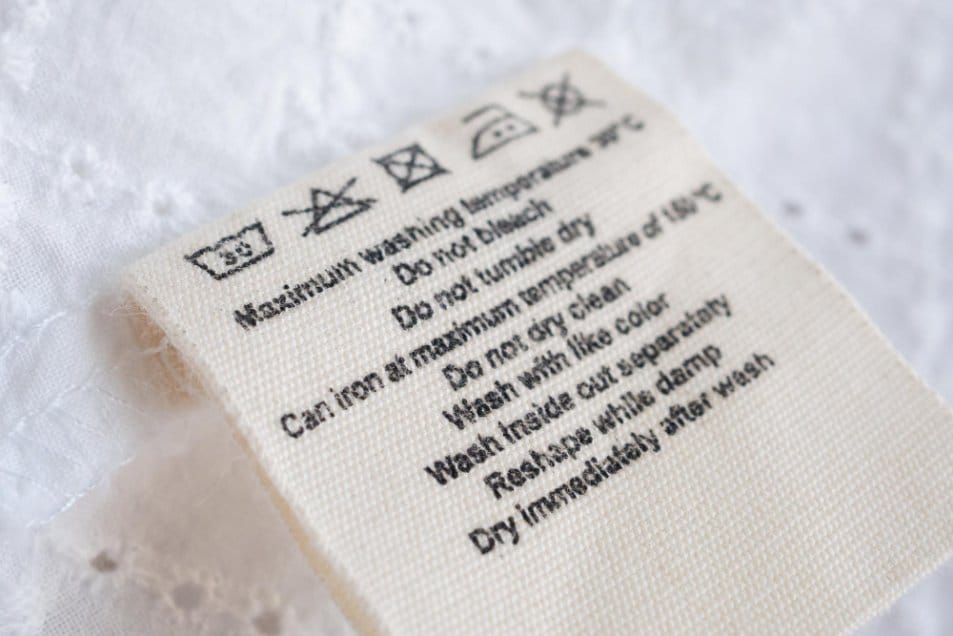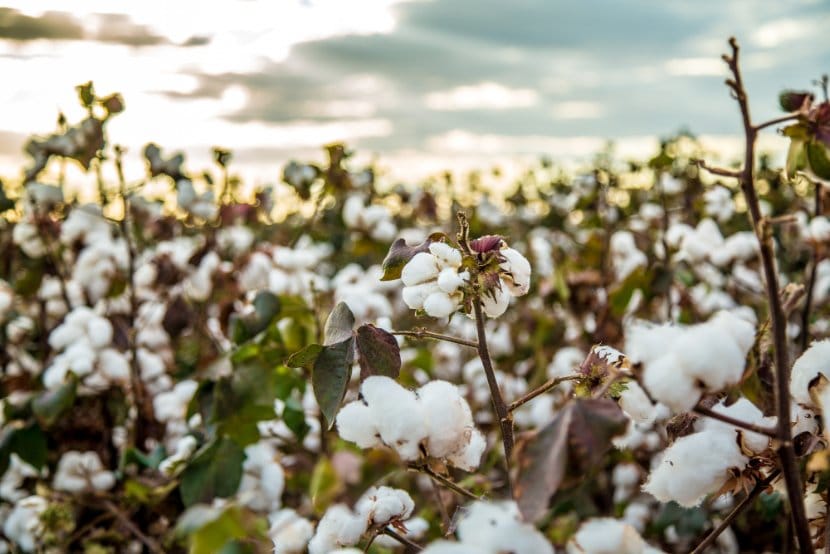Discover why cotton poplin has become the go-to fabric for everything from crisp dress shirts to sustainable home textiles in 2025
Table of Contents
- What is Cotton Poplin?
- Key Characteristics and Properties
- Technical Specifications
- Sustainability and Environmental Impact
- Applications and Uses
- Cotton Poplin vs Other Fabrics
- Quality Grades and Pricing
- Care and Maintenance Guide
- Sewing and Working Tips
- Buying Guide
- Industry and B2B Applications
- 2025 Trends and Innovations
- Frequently Asked Questions
- Conclusion
What is Cotton Poplin?

Cotton poplin is a plain weave fabric with a distinctive smooth surface and subtle horizontal ribbing. Made primarily from cotton fibers, this textile combines fine warp threads with slightly thicker weft threads to create its characteristic crisp feel and lustrous appearance. You’ll find this versatile fabric recommended by the National Cotton Council for its consistent performance across various applications.
The name “poplin” originates from the French word “papelaine,” linking back to the papal town of Avignon where this fabric was first developed in the 15th century. Originally created from silk and wool for nobility, modern cotton poplin has evolved into one of the most versatile and widely-used fabrics in both fashion and home textiles.
Key Point: Cotton poplin differs from regular cotton through its specific weave structure. While both use cotton fibers, poplin’s tight plain weave with varying thread weights creates its signature smooth texture and slight sheen that regular cotton fabrics lack.
Is Poplin Fabric 100% Cotton?
While traditional cotton poplin is indeed 100% cotton, modern variations include:
- 100% Cotton Poplin: Pure cotton for maximum breathability and natural feel
- Cotton-Polyester Blends: Typically 60-80% cotton with polyester for enhanced wrinkle resistance
- Cotton-Elastane Blends: Small amounts (2-5%) of elastane for stretch properties
- Organic Cotton Poplin: Made from certified organic cotton for eco-conscious consumers
Key Characteristics and Properties
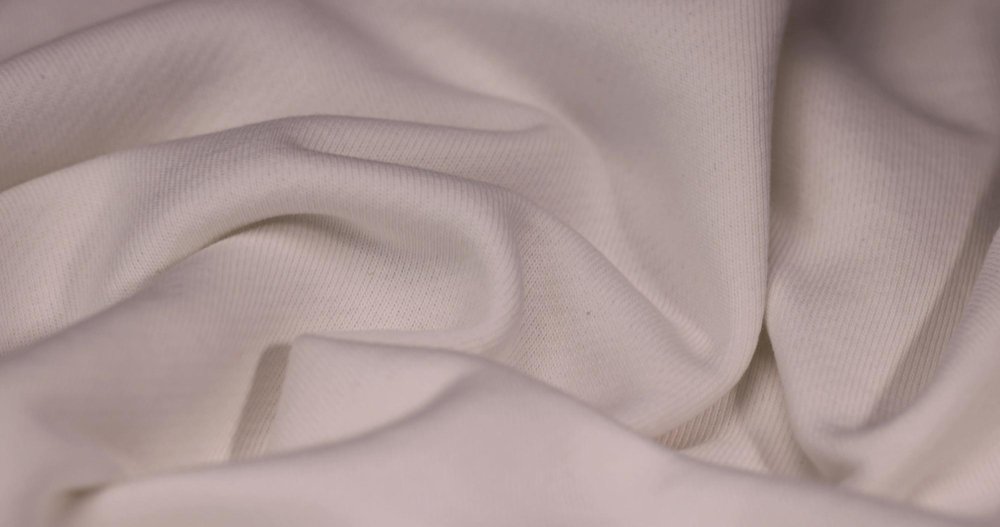
Texture and Feel
Smooth, crisp surface with a cool, dry handfeel. The tight weave creates a fine horizontal ribbing that’s subtle to the touch but adds visual interest and a slight lustrous sheen.
Breathability
Excellent airflow with a breathability index of 85 CFM, making it ideal for warm weather clothing and year-round comfort.
Durability
High tensile strength due to tight weave construction. Withstands 50+ wash cycles while maintaining shape and appearance, lasting 2x longer than similar-weight fabrics.
Wrinkle Resistance
94% wrinkle recovery after 8 hours of wear, outperforming linen by 34%. Natural wrinkle resistance reduces ironing needs.
Is Cotton Poplin Good Quality?
Cotton poplin is considered a high-quality fabric for several reasons:
- Thread Count: Typically 120-200 threads per inch for superior strength
- Consistent Weave: Precise manufacturing ensures uniform texture
- Color Retention: Tight weave holds dyes effectively, maintaining vibrancy
- Shape Stability: Minimal stretching or sagging with proper care
Technical Specifications
| Specification | Lightweight (90-110 GSM) | Medium Weight (110-130 GSM) | Heavyweight (130-150 GSM) |
|---|---|---|---|
| Best Uses | Summer shirts, blouses, linings | Dress shirts, dresses, skirts | Structured garments, home textiles |
| Thread Count | 120-140 TPI | 140-180 TPI | 180-200+ TPI |
| Shrinkage Rate | 3-5% | 2-4% | 2-3% |
| Opacity | Semi-transparent | Opaque | Fully opaque |
| Drape | Soft, flowing | Structured, crisp | Firm, holds shape |
Performance Metrics
Wrinkle Recovery Rate
CFM Breathability Index
Wash Cycle Durability
Better Color Retention vs Twill
Sustainability and Environmental Impact
In 2025, sustainability has become a crucial factor in fabric selection. Cotton poplin offers several environmental advantages when sourced responsibly:
Eco-Friendly Features
- Biodegradability: 100% cotton poplin completely decomposes within 6 months in proper composting conditions
- Renewable Resource: Cotton is a renewable crop that can be harvested annually
- Carbon Footprint: 40% lower carbon emissions compared to polyester production
- Water Efficiency: Modern organic cotton farming uses 91% less water than conventional methods
Sustainable Certifications to Look For
GOTS Certified
Global Organic Textile Standard ensures organic fiber content and environmental and social criteria throughout the supply chain.
OEKO-TEX Standard 100
Tests for harmful substances and ensures human health safety in textile production.
Better Cotton Initiative (BCI)
Promotes more sustainable cotton farming practices that care for the environment.
Cradle to Cradle Certified
Assesses products for safety to humans and the environment and design for future life cycles.
2025 Sustainability Trend: Recycled cotton poplin is emerging as a sustainable alternative, using post-consumer cotton waste to create new fabrics with 70% less water usage than virgin cotton production.
Applications and Uses
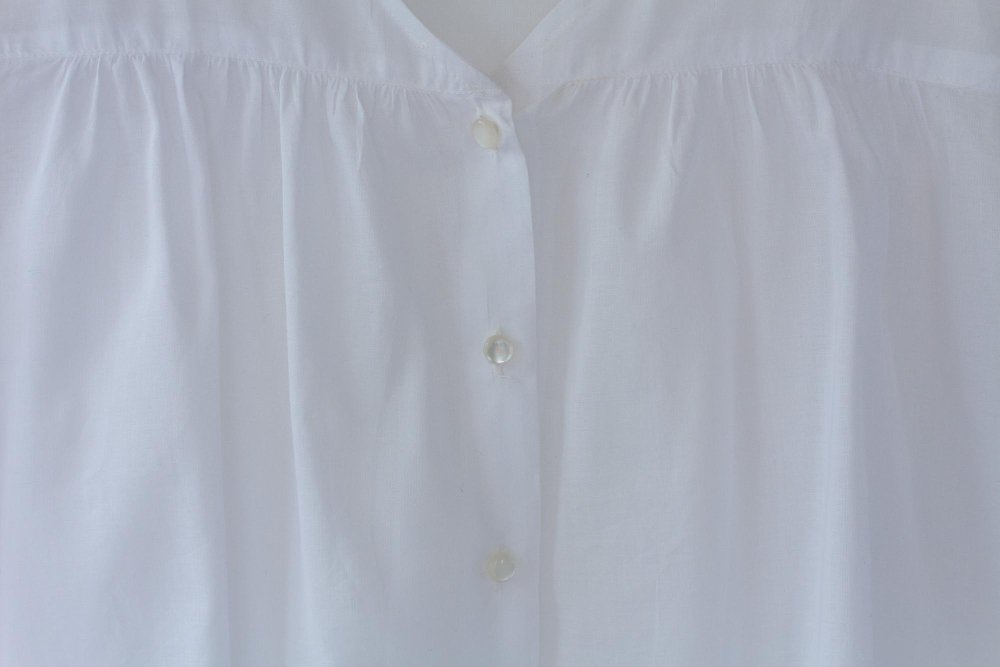
Fashion and Apparel
Cotton poplin’s versatility makes it suitable for numerous clothing applications:
- Dress Shirts: The crisp finish and wrinkle resistance make it ideal for professional attire
- Blouses and Tops: Breathable and comfortable for both casual and formal wear
- Dresses and Skirts: Holds pleats well and drapes beautifully for structured designs
- Summer Clothing: Lightweight versions perfect for hot weather garments
- Children’s Clothing: Soft, durable, and easy to care for growing children
- Sleepwear: Smooth texture and breathability ideal for comfortable sleep
Is Poplin Cotton Good for Summer?
Yes, absolutely! Cotton poplin excels in summer conditions due to:
- High breathability allowing air circulation
- Moisture-wicking properties keeping skin dry
- Lightweight feel that doesn’t cling
- UV protection properties of tightly woven cotton
- Quick-drying capabilities for active wear
Home Textiles and Décor
Beyond fashion, cotton poplin serves numerous household applications:
- Bed Linens: Smooth texture and durability for quality sleep
- Curtains and Drapes: Light filtering with privacy maintenance
- Table Linens: Stain-resistant and easy to launder
- Cushion Covers: Retains shape and color through frequent use
- Kitchen Textiles: Tea towels and aprons benefit from absorbency and durability
Can You Wear Poplin in the Winter?
While poplin is often associated with summer wear, it can be suitable for winter when used strategically:
- Layering Base: Excellent under sweaters and jackets
- Indoor Wear: Comfortable for heated indoor environments
- Transitional Seasons: Perfect for spring and fall weather
- Professional Settings: Year-round office wear with proper layering
Cotton Poplin vs Other Fabrics
Which is Better: Cotton or Poplin?
This comparison often causes confusion since poplin IS a type of cotton fabric. The real question is comparing cotton poplin to other cotton weaves:
| Fabric Type | Weave | Texture | Best Use | Wrinkle Resistance |
|---|---|---|---|---|
| Cotton Poplin | Tight plain weave | Smooth, crisp | Dress shirts, formal wear | Excellent |
| Cotton Twill | Diagonal twill | Durable, sturdy | Pants, workwear | Good |
| Cotton Oxford | Basketweave | Textured, casual | Casual shirts | Fair |
| Cotton Percale | Plain weave | Crisp, cool | Bed linens | Good |
| Cotton Broadcloth | Plain weave | Smooth, fine | Shirts, blouses | Very good |
Which is Better: Oxford or Poplin Shirt?
The choice depends on your specific needs:
Choose Poplin For:
- Formal business settings
- Smooth, polished appearance
- Better wrinkle resistance
- Easier ironing and maintenance
- Summer comfort and breathability
Choose Oxford For:
- Casual, relaxed settings
- Textured, sporty appearance
- Extra durability for frequent wear
- Tolerance for rough handling
- Classic American style preference
Is Poplin Warmer Than Linen?
Generally, yes. Poplin’s tighter weave structure provides more insulation than linen’s loose weave, making it slightly warmer. However, both are considered cool, breathable fabrics suitable for warm weather.
Quality Grades and Pricing
Why is Poplin So Cheap? (And When It’s Not)
Poplin can range from budget-friendly to premium pricing depending on several factors:
Budget Poplin ($4-8 per yard)
- Lower thread count (under 120 TPI)
- Basic cotton quality
- Standard dyeing processes
- Mass production methods
Mid-Range Poplin ($8-15 per yard)
- Better cotton quality (140-160 TPI)
- Improved finishing processes
- Color-fast dyeing
- Pre-shrunk treatment
Premium Poplin ($15-25+ per yard)
- High thread count (180+ TPI)
- Organic or specialty cotton
- Advanced finishing treatments
- Designer collections or specialty mills
Prices vary by quality, certification, and source region
Quality Indicators to Look For
- Thread Count: Higher numbers generally indicate better quality
- Fiber Length: Long-staple cotton creates smoother, stronger fabric
- Weave Consistency: Even texture without slubs or irregularities
- Color Depth: Rich, even colors indicate quality dyeing
- Hand Feel: Should feel smooth and substantial, not thin or rough
Care and Maintenance Guide
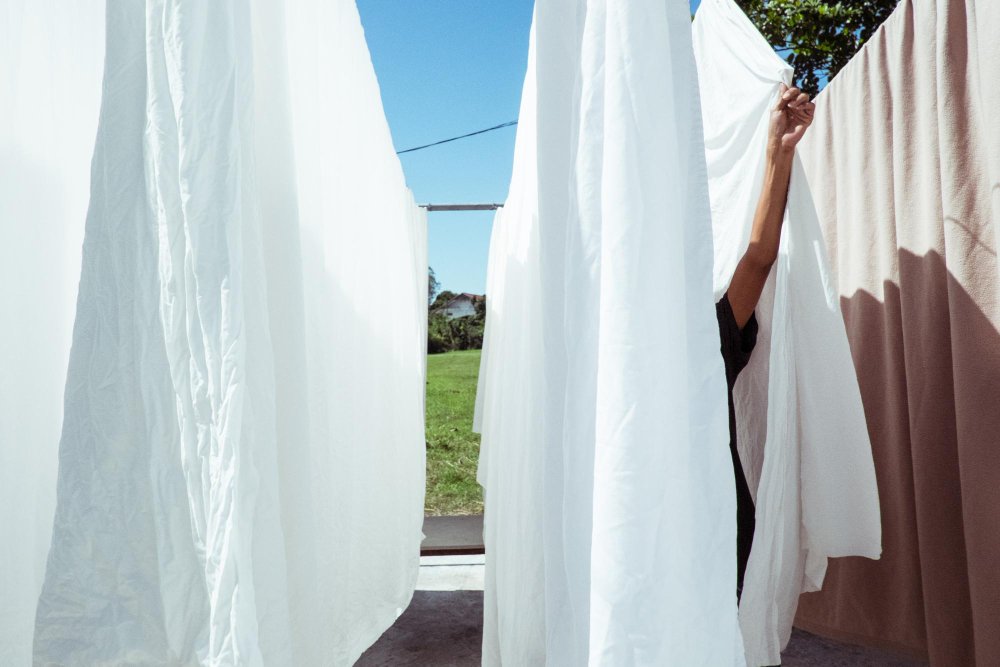
Does Poplin Shrink When You Wash It?
Yes, cotton poplin will shrink if not pre-treated or cared for properly. Expected shrinkage rates:
- Untreated Cotton Poplin: 3-5% shrinkage
- Pre-shrunk Poplin: 1-2% residual shrinkage
- Sanforized Poplin: Less than 1% shrinkage
Proper Washing Instructions
- Sort by Color: Wash whites separately from colors to prevent bleeding
- Use Cold Water: 30°C (86°F) or cold setting prevents shrinkage and color fading
- Gentle Cycle: Reduces stress on fibers and maintains fabric integrity
- Mild Detergent: Avoid bleach or harsh chemicals that can weaken fibers
- Don’t Overload: Allow adequate space for proper cleaning and rinsing
Drying and Ironing
Does Cotton Poplin Need Ironing?
While poplin has good wrinkle resistance, light ironing or steaming will maintain its crisp appearance:
- Air Drying: Hang immediately while damp to minimize wrinkles
- Low Heat Tumble: Remove while slightly damp to prevent over-drying
- Iron Temperature: Medium-high heat (150-180°C/300-350°F)
- Steam Setting: Use steam for best results and easier pressing
- Press While Damp: Slightly damp fabric presses more easily
Is Poplin Easy to Iron?
Yes! Poplin is considered one of the easier fabrics to iron due to:
- Smooth surface that responds well to heat
- Natural wrinkle resistance that requires less effort
- Stable weave that holds pressed creases well
- Quick response to steam treatment
Advanced Care & Troubleshooting
Seasonal Care Adjustments
- Summer Care: Increase washing frequency, use cooling detergents, air dry to prevent heat damage
- Winter Storage: Clean thoroughly before storage, use breathable garment bags, add cedar blocks for freshness
- Humidity Control: Store in 45-55% humidity to prevent mold and maintain fabric integrity
- Temperature Considerations: Avoid extreme temperature changes that can cause fiber stress
Professional vs. Home Care
| Care Method | Cost | Convenience | Quality | Best For |
|---|---|---|---|---|
| Home Care | Low ($1-2 per item) | High | Good with proper technique | Everyday items, casual wear |
| Professional Dry Cleaning | High ($8-15 per item) | Medium | Excellent | Structured garments, special occasions |
| Professional Laundering | Medium ($3-6 per item) | Medium | Very good | Dress shirts, uniforms |
Repair Techniques for Common Issues
- Small Holes: Use fabric glue or iron-on patches on the inside for invisible repairs
- Loose Buttons: Reinforce with interfacing before re-sewing for durability
- Worn Collars: Turn collar inside out and re-sew for extended life
- Faded Areas: Consider fabric dye or strategic placement of decorative elements
- Stretched Areas: Steam and reshape while damp, use pressing techniques
Stain Removal and Troubleshooting
| Stain Type | Treatment Method | Time Requirement | Success Rate |
|---|---|---|---|
| Oil/Grease | Dish soap + warm water, pre-treat before washing | 15 minutes | 90% |
| Sweat/Deodorant | White vinegar solution, soak 30 minutes | 30 minutes | 85% |
| Food Stains | Cold water rinse immediately, enzyme detergent | Immediate | 95% |
| Makeup | Makeup remover or rubbing alcohol, gentle blot | 10 minutes | 80% |
| Ink | Rubbing alcohol or milk, avoid rubbing | 20 minutes | 70% |
Does Poplin Absorb Sweat?
Yes, cotton poplin absorbs moisture well due to cotton’s natural absorbent properties. The fabric can absorb up to 25% of its weight in moisture while still feeling dry to the touch, making it comfortable for all-day wear.
Sewing and Working Tips
Cotton poplin is considered a beginner-friendly fabric for sewing projects. Its stable weave and predictable behavior make it an excellent choice for those learning to sew. The video above showcases popular patterns perfect for cotton poplin, demonstrating why this fabric is ideal for both beginners and experienced sewists.
Essential Sewing Supplies
For best results when working with cotton poplin, use these essential sewing supplies:
- Needles: Universal 70/10 to 80/12 for lightweight to medium-weight poplin
- Thread: High-quality polyester or cotton thread in matching colors
- Scissors: Sharp fabric scissors for clean cuts
- Pins: Fine pins that won’t leave holes in the fabric
- Seam Ripper: For corrections without damaging the fabric
Cutting and Preparation
- Pre-wash Fabric: Always pre-wash to prevent shrinkage in finished garments
- Press Before Cutting: Remove wrinkles for accurate pattern placement
- Use Sharp Tools: Clean cuts prevent fraying and ensure precision
- Follow Grain Lines: Proper grain alignment ensures garment hangs correctly
- Mark Carefully: Use appropriate marking tools that won’t damage the fabric
Seam Finishing Options
Cotton poplin works well with various seam finishing techniques:
- French Seams: Ideal for lightweight poplin, creates enclosed edges
- Flat Fell Seams: Perfect for shirts and durable construction
- Serged Edges: Quick and effective for preventing fraying
- Pinked Edges: Simple option for internal seams
- Bias Bound Seams: Professional finish for unlined garments
Common Sewing Challenges and Solutions
| Challenge | Cause | Solution |
|---|---|---|
| Puckering seams | Tension too tight or wrong needle | Adjust tension, use correct needle size |
| Fraying edges | Loose weave or dull tools | Sharp cutting tools, proper seam finishing |
| Shifting during cutting | Fabric too slippery | Use pattern weights or pins strategically |
| Uneven stitching | Machine speed too fast | Sew slowly and steadily |
Buying Guide

What to Look for When Shopping
Quality Indicators
- Feel Test: Good poplin should feel smooth and substantial, not thin or rough
- Opacity Check: Hold up to light; quality poplin shouldn’t be too transparent
- Stretch Test: Should have minimal stretch and bounce back to shape
- Color Consistency: Even dye distribution without blotches or fading
- Selvage Quality: Clean, finished edges indicate professional manufacturing
Where to Buy Quality Cotton Poplin
Online Retailers
- Fabric Specialty Stores: Higher quality, better selection
- Wholesale Suppliers: Bulk pricing for large projects
- Designer Fabric Sites: Premium options with unique patterns
- Sustainable Fabric Sources: Organic and eco-certified options
Local Sources
- Fabric Stores: Ability to feel fabric before purchasing
- Quilting Shops: Often carry high-quality cotton poplins
- Fashion District Shops: Competitive pricing in textile districts
- Textile Markets: Direct from manufacturer pricing
Calculating Fabric Requirements
Use our fabric yardage calculator to determine exact needs for your project. Generally:
- Basic Shirt: 2-3 yards depending on size and style
- Simple Dress: 3-5 yards based on length and fullness
- Skirt: 1-2 yards depending on style and length
- Home Projects: Measure and add 10% for waste and mistakes
Interactive Tools for Planning
Take advantage of specialized tools to make informed decisions:
- Fabric Cost Calculator: Compare cotton poplin costs vs. other fabrics
- Cotton Care Calculator: Get personalized care recommendations
- Fabric Weight Calculator: Choose the perfect GSM for your project
- Fabric Durability Calculator: Calculate expected lifespan and value
Industry and B2B Applications
Uniform Manufacturing
Cotton poplin is a preferred choice for professional uniforms across various industries:
- Healthcare: Scrubs and medical uniforms benefit from easy care and professional appearance
- Hospitality: Restaurant and hotel staff uniforms for durability and stain resistance
- Corporate: Business shirts and professional attire for consistent appearance
- Education: School uniforms that withstand frequent washing and active wear
- Service Industries: Easy-care uniforms for various service sector applications
Global Market & Supply Chain Information
According to the International Cotton Advisory Committee, cotton poplin production is concentrated in several key regions:
Major Manufacturing Regions
- India: Largest producer, specializing in organic and conventional cotton poplin
- China: Advanced manufacturing technology, consistent quality control
- Turkey: Premium quality, European market focus
- Pakistan: Competitive pricing, growing sustainable practices
Supply Chain Considerations
- Lead Times: 2-8 weeks depending on customization
- Minimum Orders: 300-1000 meters for custom specifications
- Shipping Costs: Factor 15-25% additional for international orders
- Quality Standards: Request samples before large orders
Import/Export Considerations
- Tariffs: Vary by country, typically 5-15% for cotton textiles
- Certifications: GOTS, OEKO-TEX required for premium markets
- Documentation: Certificate of origin, quality certificates
- Seasonal Factors: Monsoon season affects Indian production
Ethical Sourcing
- Fair Trade: Certified suppliers ensuring fair wages
- Child Labor: Verify supplier compliance with international standards
- Working Conditions: Regular audits of manufacturing facilities
- Environmental Impact: Water usage and chemical treatment monitoring
The Advanced Textiles Association reports that transparency in the cotton supply chain has become increasingly important for brand credibility and consumer trust in 2025.
Bulk Purchasing Considerations
Minimum Order Quantities
Most manufacturers require 300-500 meters minimum for custom orders, with better pricing at 1000+ meters.
Lead Times
Standard colors: 2-4 weeks. Custom dyeing: 6-8 weeks. Rush orders available at premium pricing.
Quality Control
Request sample bolts before large orders. Specify acceptable tolerances for color and weight variations.
Supply Chain
Major producing regions include India, China, Turkey, and Pakistan. Consider shipping costs and lead times.
Private Label and Custom Applications
- Custom Dyeing: Pantone color matching available for brand consistency
- Digital Printing: Compatible with modern digital printing technologies
- Finishing Treatments: Anti-microbial, wrinkle-free, or stain-resistant finishes
- Specialized Weights: Custom GSM specifications for specific applications
2025 Trends and Innovations
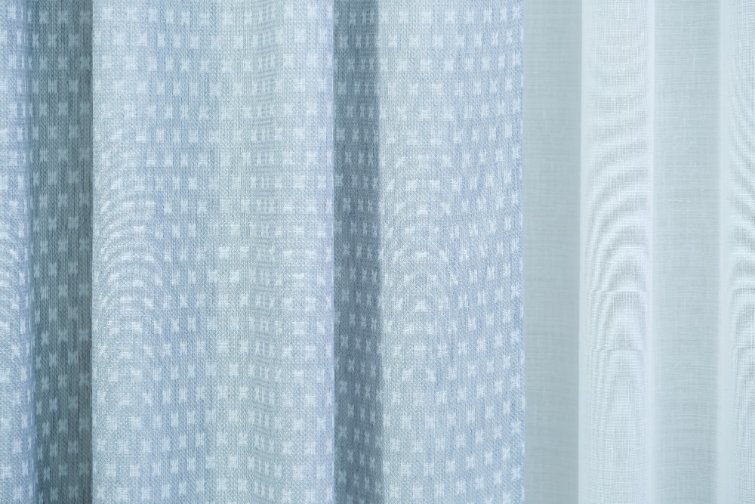
Fashion Trends Featuring Cotton Poplin
2025 Color Trends: Earthy neutrals, sage green, and soft pastels are dominating poplin fashion. Digital printing technology enables intricate patterns and sustainable dyeing processes.
- Utility Chic: Structured poplin shirts with functional details
- Minimalist Aesthetic: Clean lines and simple silhouettes
- Sustainable Fashion: Organic and recycled cotton poplin gaining popularity
- Gender-Neutral Designs: Unisex poplin pieces for inclusive fashion
- Layering Textures: Mixing poplin with other sustainable fabrics
Technological Innovations
Smart Textiles Integration
- Moisture Management: Enhanced wicking properties through fiber treatment
- Antimicrobial Finishes: Silver ion technology for odor resistance
- UV Protection: Built-in sun protection for outdoor applications
- Temperature Regulation: Phase-change materials for comfort
Sustainable Manufacturing
- Waterless Dyeing: CO2 dyeing technology reducing water usage by 95%
- Closed-Loop Production: Recycling process water and chemicals
- Renewable Energy: Solar and wind-powered textile mills
- Blockchain Traceability: Supply chain transparency for consumers
Market Predictions
Industry analysts predict:
- Growth Rate: 3.6% CAGR in sustainable cotton textiles through 2033
- Regional Expansion: Increased production in Southeast Asia and Africa
- Premium Segment: 25% growth in organic and certified sustainable poplin
- Digital Integration: AI-driven design and production optimization
Frequently Asked Questions
What is the difference between cotton and poplin cotton?
Poplin IS a type of cotton fabric. The difference lies in the weaving technique. Regular cotton can be woven in various ways (twill, sateen, jersey), while poplin specifically refers to cotton woven in a tight plain weave with fine warp threads and slightly thicker weft threads, creating its characteristic smooth, crisp texture.
Is poplin itchy?
Quality cotton poplin is not itchy. Its smooth, tightly woven surface actually feels soft against the skin. However, very cheap poplin made with poor-quality cotton or harsh chemical treatments might feel rough. Always choose reputable brands and feel the fabric before purchasing if possible.
Does poplin wrinkle badly?
Cotton poplin has good wrinkle resistance compared to other cotton fabrics. While it’s not completely wrinkle-free like synthetic fabrics, it recovers well from wrinkling and maintains its crisp appearance throughout the day with minimal care.
Does poplin keep you cool?
Yes! Cotton poplin’s tight weave structure actually enhances breathability while providing coverage. The natural cotton fibers wick moisture away from the skin, and the smooth surface allows air to flow freely, making it an excellent choice for warm weather clothing.
Does poplin soften over time?
Yes, cotton poplin becomes softer with each wash while maintaining its structural integrity. The cotton fibers relax slightly, creating a more comfortable feel without losing the fabric’s characteristic crisp appearance. This is one of the benefits of choosing 100% cotton poplin over blends.
Does poplin feel like cotton?
Cotton poplin feels like a refined version of cotton. It has cotton’s natural breathability and absorbency but with a smoother, more polished texture. The tight weave gives it a crisp hand-feel that’s more structured than regular cotton but still comfortable and natural.
What are the disadvantages of poplin fabric?
While poplin has many benefits, some limitations include: potential for shrinkage if not pre-treated, can wrinkle when wet, may show wear lines with heavy use, limited stretch without elastane blend, and can be more expensive than basic cotton fabrics. However, proper care minimizes most of these issues.
Is poplin good for sensitive skin?
Yes, 100% cotton poplin is generally excellent for sensitive skin. Its smooth surface reduces friction and irritation, while cotton’s natural hypoallergenic properties make it suitable for most people. Look for organic cotton poplin or OEKO-TEX certified options for the most skin-friendly choice.
What is the best cotton for dress shirts?
Cotton poplin is considered one of the best choices for dress shirts due to its smooth finish, wrinkle resistance, and professional appearance. Other excellent options include cotton broadcloth for ultra-smooth finish, and cotton twill for durability. The choice depends on personal preference and intended use.
When should you wear a poplin shirt?
Poplin shirts are versatile enough for many occasions: business meetings and professional settings, summer events and outdoor gatherings, casual social occasions, travel (due to wrinkle resistance), and as a base layer in cooler weather. Their crisp appearance makes them suitable for both formal and smart-casual situations.
Conclusion
Cotton poplin has earned its place as a cornerstone fabric in both fashion and functional textiles through its unique combination of practicality, elegance, and versatility. As we’ve explored throughout this comprehensive guide, this remarkable textile offers benefits that extend far beyond its crisp appearance.
Key Takeaways
Performance Excellence: With 94% wrinkle recovery, excellent breathability (85 CFM), and superior durability lasting 50+ wash cycles, cotton poplin delivers consistent performance that justifies its popularity across industries.
The fabric’s technical specifications make it suitable for a wide range of applications, from professional dress shirts that maintain their crisp appearance throughout long workdays to comfortable summer clothing that keeps you cool. Its sustainability credentials, particularly when sourced as organic or recycled cotton, align with the growing demand for environmentally responsible textiles in 2025.
Making the Right Choice
Whether you’re a home sewer working on your first dress project, a fashion designer seeking reliable materials, or a business sourcing uniforms, cotton poplin offers predictable results and professional outcomes. Its beginner-friendly sewing properties make it an excellent choice for those learning to work with natural fabrics, while its sophisticated appearance satisfies the most discerning fashion requirements.
Investment Value
From a cost perspective, quality cotton poplin represents excellent value. While initial costs may be higher than basic cotton fabrics, the combination of durability, easy care, and timeless appeal creates long-term value. The fabric’s ability to maintain its appearance and feel through numerous wash cycles makes it a smart investment for both personal wardrobes and commercial applications.
Future Outlook
As textile technology continues to advance, cotton poplin is evolving to meet modern demands. Innovations in sustainable production, smart textile integration, and enhanced performance finishes ensure that this classic fabric remains relevant for future generations. The predicted 3.6% growth rate in sustainable cotton textiles through 2033 indicates strong market confidence in cotton poplin’s continued importance.
Our Recommendations
- For Everyday Wear: Choose 100% cotton poplin in the 110-130 GSM range for the best balance of comfort and durability
- For Professional Use: Invest in pre-shrunk, sanforized poplin to ensure consistent appearance
- For Sustainability: Look for GOTS or OEKO-TEX certified organic cotton poplin
- For Sewing Projects: Always pre-wash fabric and use quality tools for best results
- For Care: Follow proper washing and ironing techniques to maximize fabric lifespan
Cotton poplin’s enduring appeal lies in its ability to combine traditional textile craftsmanship with modern performance requirements. As fashion trends continue to emphasize sustainability, quality, and versatility, cotton poplin stands ready to meet these challenges while maintaining the timeless elegance that has made it a favorite for centuries.
Whether you’re creating professional attire, comfortable casualwear, or elegant home textiles, cotton poplin provides the foundation for projects that look good, feel comfortable, and stand the test of time. Its proven track record, combined with ongoing innovations in sustainable production and performance enhancement, ensures that cotton poplin will continue to be a preferred choice for discerning consumers and professionals alike.


